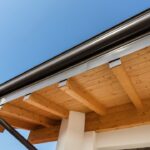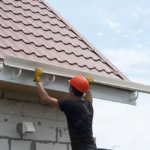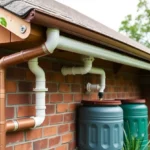When considering the comprehensive protection of your home, understanding what is roof flashing is essential. At its core, roof flashing is a formidable component in safeguarding roofs from water damage. This integral element ensures that water is directed away from vulnerable areas like chimneys, vents, and valleys, preventing leaks and damage over time.
Envision a rainy day where water persists in finding a way into your home. Roof flashing acts like a steadfast guardian, keeping your interiors dry and protected. When homeowners grasp how roof flashing works, they appreciate its considerable importance in maintaining their property’s integrity.

The Importance of Roof Flashing: A Tremendous Technology
Roof Flashing is a small, yet pivotal element, representing sophisticated modern building technology. It effectively seals the joints and edges, where two different surfaces of the roof meet. By standing as a barrier, it prevents water intrusion, thus prolonging the roof’s lifespan.
Components and Materials Used in Roof Flashing
Typically, flashing is made from durable materials like galvanized steel, aluminum, or copper. These materials withstand harsh environmental conditions, offering tremendous resistance to water flow and structural shifts.
Why Homeowners Should Be Delighted with Approved Flashing Types
Choosing the right type of flashing is crucial. There are several different types like step flashing, chimney flashing, and continuous flashing. Each serves a unique purpose, approved by experts, ensuring water is consistently diverted away from the house structure.
Select Roof Company could be your first step towards ensuring a solid installation of roof flashing.
Installing Roof Flashing: Its Big Benefits
Proper installation of roof flashing comes with numerous advantages. Not only does it protect against leaks, but it also aids in reducing maintenance costs. As a homeowner, familiarizing yourself with installation techniques can offer peace of mind, ensuring your roof is secure at all joints.
Steps to Ensure the Installation is Approved
Each installation step is critically inspected as it needs to meet certain standards and regulations. Enlisting the help of a professional roofing contractor ensures all steps are meticulously followed.
Roof Material Selection also plays into how effective the flashing will be, given that different materials interact uniquely with diverse flashing types.
Common Roof Flashing Problems and Solutions
Over time, roof flashing can present challenges if not properly maintained. Common issues include rust, cracking, and improper alignment. These defects can lead to water leaks, causing structural damage.
Resolving Flashing Challenges with Tremendous Care
Regular inspection and timely repairs are key. Ensuring that flashing is free from debris, rust, and is properly sealed can rectify issues before they escalate.
One way to achieve durability is by selecting suitable roofing materials. Check a detailed guide TPO Roofing Insights to consider alternatives that might harmonize well with your preferred flashing.
Choosing the Best Materials for Roof Flashing
The strength and durability of flashing heavily depend on the material chosen. Homeowners have various options, each with its specific advantages.
Consider Copper for Long-Term Performance
Copper is especially popular due to its durability and resistance to rust, making it an excellent choice for lengthy periods.
Select Aluminum for a Terrific Cost-Effective Solution
Aluminum stands as a viable option for those seeking a cost-effective yet strong solution. It’s lightweight and manageable for installers.
Understanding External Costs for Roof Flashing
For those curious about the potential costs involved with roof replacements or extensive flashing repairs, external resources can be invaluable. Visit this [roof replacement cost guide](https://www.checkatrade.com/blog/cost-guides/roof-replacement-cost/) for detailed insights on assessing potential expenses associated with such home improvement projects.

FAQs about Roof Flashing
What are the Signs of Faulty Roof Flashing?
Signs include water leaks, visible rust or damage, and improper alignment at roof joints.
How Often Should Roof Flashing be Inspected?
Regular checks every season or following any major weather event are recommended to ensure durability.
What Materials Work Best with Roof Flashing?
Metal roofs complement flashing well, enhancing durability. Explore a [complete guide to EPDM roofing](https://roof-home.com/what-is-epdm-roofing-a-complete-guide-to-this-durable-roofing-material/) for resilient roofing options.
This article contains affiliate links. We may earn a commission at no extra cost to you.








